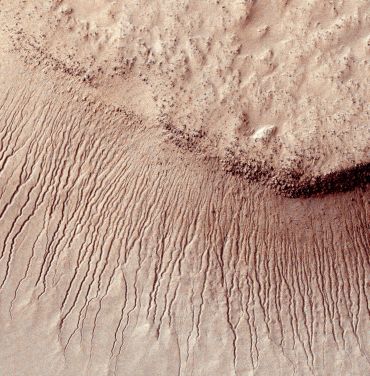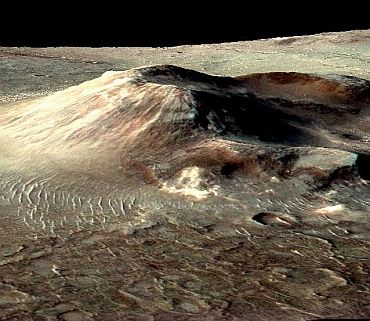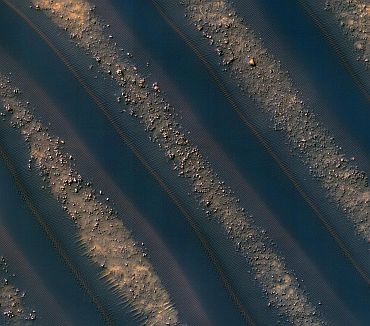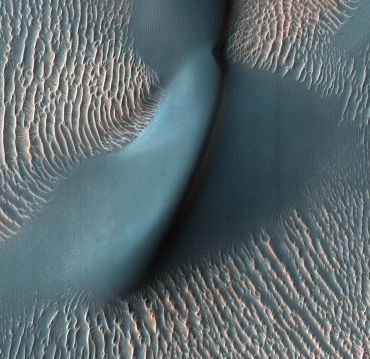
It is known that there are frozen water deposits on Mars. Now, it seems that there are seasonal streams of liquid water flowing across the surface of the Red Planet, say astronomers.
In fact, it was US space agency NASA which said that pictures taken from its Mars Reconnaissance Orbiter spacecraft showed finger-like features which may be flows of salty water spilling over the rims of craters.
Click on NEXT to see more PHOTOS...

"NASA's Mars Exploration Programme keeps bringing us closer to determining whether the Red Planet could harbor life in some form, and it reaffirms Mars as an important future destination for human exploration," said NASA Administrator Charles Bolden.
MRO observations have tracked the seasonal changes in the dark, finger-like features appear and extend down Martian slopes late spring through summer, fade in winter, and return during the next spring.
Some aspects of the observations still puzzle researchers, but flows of liquid brine fit the features' characteristics better than alternate hypotheses. Saltiness lowers the freezing temperature of water.
"These dark lineations are different from other types of features on Martian slopes," said MRO project scientist Richard Zurek of NASA's Jet Propulsion Laboratory in Pasadena, Calif.


Lujendra Ojha and colleagues at the University of Arizona now claim that, if confirmed, the discovery could finally help establish whether life could be sustained on Mars.
"I was baffled when I first saw those features. We soon realised they were different from slope streaks that had been observed before. These were highly seasonal and we observed some of them had grown by more than 200 metres in a matter of just two Earth months," Jha said.
His colleague, Dr Alfred McEwen said the markings were "a mystery now, but a solvable mystery". "The best explanation we have for these observations so far is a flow of briny water, although this study does not prove that," he said.
The puzzling markings, which appear on several steep slopes south of the Martian equator, fade in the winter and reappear in the spring. While water may not be seen flowing above ground, the dark clusters could mean the water is underneath the surface, the Daily Express online reported.

When the astronomers looked closer, their equipment failed to confirm the presence of water.
But Dr McEwen said this could be because the water quickly dries on the surface and happened not to be there when tests were carried out. Alternatively, it might exist but at shallow depths.
